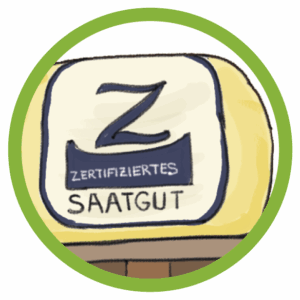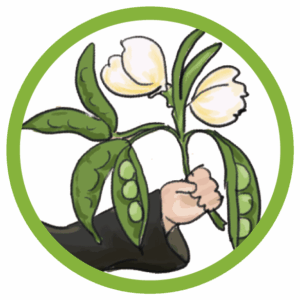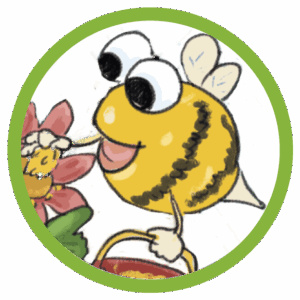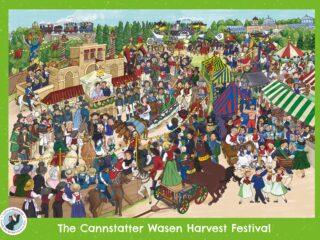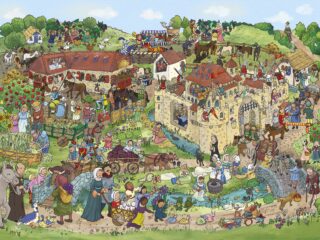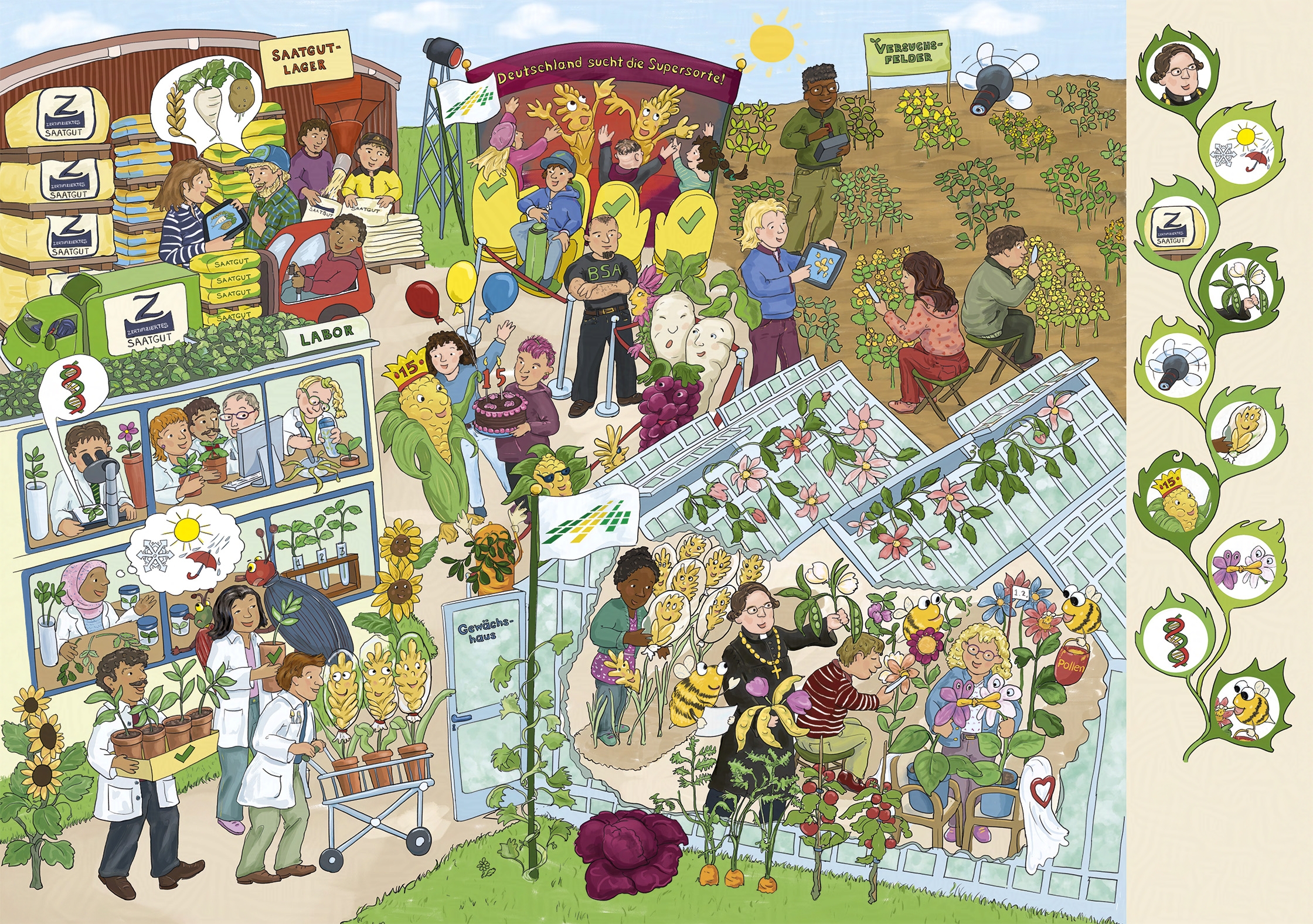
Where’s the Pea? Search-and-Find Fun for Curious Museum Visitors
Author: Kimberley Hoffman
Reading time: about 10 – 13 Minutes including the screen reader description
Screen Readers: A complete screen reader friendly description of my search-and-find illustration »Cultivation breeds Diversity« is at the end of my blog.
Why Aren’t Museums Teeming with Attention?
Some days, your museum might look like a search-and-find picture — with people milling about. But, have you ever noticed how many museum visitors just wander without really seeing or connecting? A kind of aimless flow through the halls? Or how they just go for a selfie with the Mona Lisa and go home? How much attention do they really pay to the exhibits? And how can you help them transform what they see into a higher, more comprehensive experience?
Museums face an invisible, but very real, modern-day challenge: short attention spans.
A 2010 study observed visitors across various exhibitions and found that, on average, they stayed less than 20 minutes. That’s not a lot of time to dive into complex topics, and I don’t know if it’s gotten better since then. I couldn’t find any further studies. But I can offer a solution. Read this case study about my Search-and-Find illustration »Cultivation Creates Diversity« to discover more.
What is a Search-and-Find Illustration – and what can it do?
A search-and-find illustration (known in German as a »Wimmelbild«) is a detailed, lively scene where many things are happening at once. Think of it as a visual playground full of small stories that come together to tell a bigger one.
These pictures are packed with discoveries. They spark curiosity, draw people in, and make even complex ideas feel more relatable. Abstract concepts become tangible. A good search-and-find scene can show where things come from, how they’re used — and why they matter in a broader cultural context. Through their storytelling capabilities, they are perfectly suited as an educational illustration for museum learning.
One of the best things? These illustrations smash language barriers without losing anything in the translation.
Search-and-Find Visuals Invite Interaction
Search-and-Find images speak to all ages — and actively engage children and families. Even adults without kids — whether old fogies and young whippersnappers— linger longer. Why? Because there’s always another clever detail to discover.
It’s fun to watch this in action. Kids often find things in the illustrations first, proudly point them out to the grown-ups, and spark animated conversations. You might even spot visitors roaming the museum, still talking about (and searching for (!) what they’ve seen.)
My Search-and-Find illustrations invite storytelling. They’re not just layered, they’re visually nutritious — easy to digest but packed with meaning. Everyone understands them, regardless of age or background.
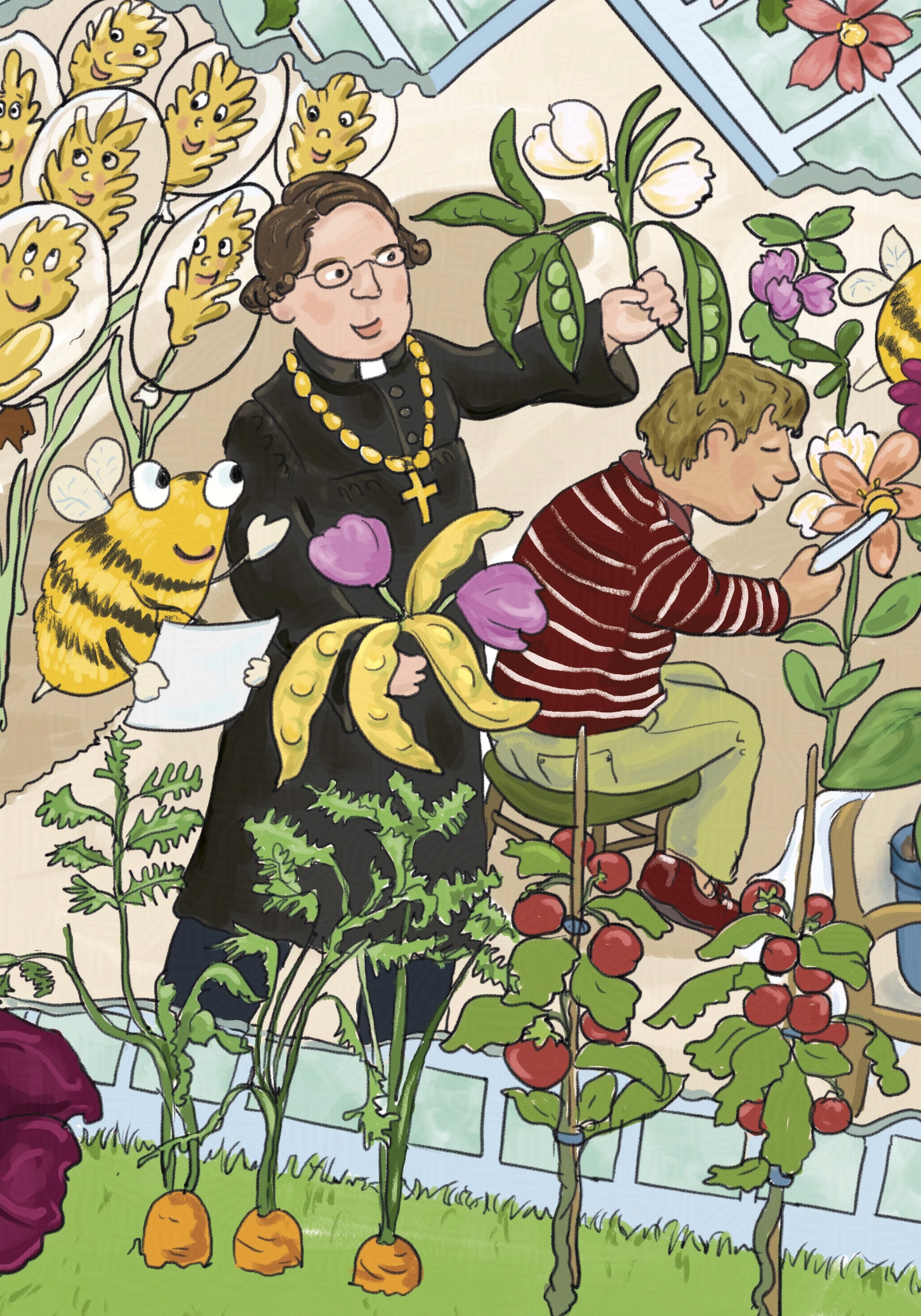
Case Study: Plant Cultivation Creates Diversity
For the Federal Association of German Plant Cultivators (BDP), I created a custom search-and-find illustration to explain complex topics around plant cultivation.
Project Goals – Briefing
Inform, educate – and correct misunderstandings. The illustration would be used across Germany — at trade fairs, school visits, and public outreach events. The BDP had clear goals:
- Avoid common misconceptions: Many people wrongly associate »plant cultivation« with negative headlines about »genetic engineering«. The illustration needed to clarify this.
- Show how plant cultivation contributes to sustainability: For example, by developing crops that resist pests or thrive in changing climates.
- Explain the long, research-based journey from the first test plant to a market-ready variety.
- Highlight the importance of science in sustainable agriculture.
»Cultivation breeds Diversity« sprouts »Aha!« moments for all ages
The response to the search-and-find illustration, titled »Cultivation Breeds Diversity,« was overwhelmingly positive. Both children and adults loved exploring it.
They now understand the importance of BDP’s work and how it contributes to a healthy and diverse plant world. Kids spent a surprisingly long time engaging with the educational visuals — and so did the grown-ups. Many said the image helped them appreciate the complexity and value of plant cultivation in a new way. (My images also awakened their childlike wonder and curiosity about the topic and BDPs work.)
These kinds of search-and-find illustrations turn complex content into personal discoveries. Through playful storytelling, they increase engagement, boost memory retention, and invite visitors to truly connect.
Plant Cultivation Seeds Curiosity — Search-and-Find iIlustration Highlights
In this search-and-find illustration, I built humorous bridges of knowledge to grow viewer interest and comprehension.
The Corn King Coronation
The corn cob celebrates its 15th birthday and wears a crown— a nod to the fact that it takes up to 15 years to develop a new crop variety and get it out on the market.

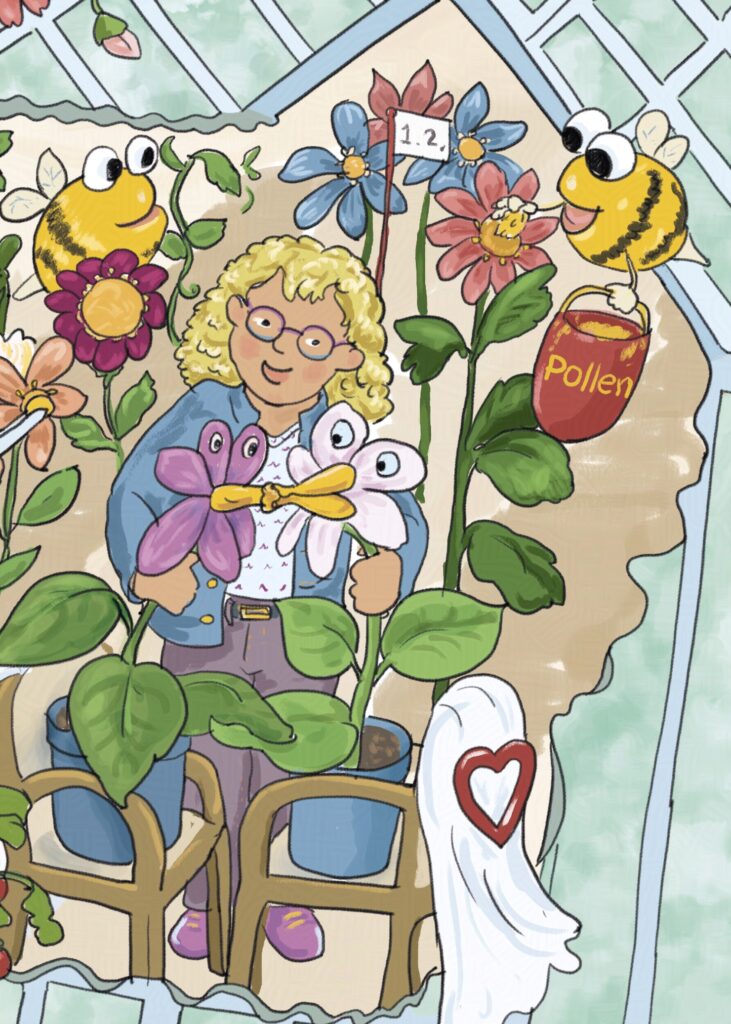
The Flower Wedding — A Dewy »I do«
A playful nod to pollination: a botanist officiates a floral wedding to demonstrate direct pollen transfer — you may now kiss the bride.
Mendel’s Green Peas
Gregor Mendel in a greenhouse? Hungry beetles gazing sadly through the laboratory window? Flower weddings? But, of course!
The search-and-find picture “Cultivation Creates Diversity” gets you addicted to knowledge about plant cultivation. It provides a valuable educational approach to the history of plant cultivation – whether in the classroom, at interactive learning stations or in your museum exhibition. The image supports the visual transfer of knowledge and is ideal for creative museum didactic formats – especially for children, families and educational groups.
10 Hidden Highlights
To accompany the main search-and-find illustration, I created 10 smaller vignette-style search motifs. Can you spot them all?
A Search-and-Find Success!
The BDP now uses this search-and-find illustration successfully at events and in schools. It engages families, kids, and professionals alike — sparking curiosity, conversations, and understanding.
Through clever storytelling, these search-and-find images increase visitor dwell time, improve recall, and turn exhibitions into personal learning adventures.
Interested in making your museum exhibits teem with engagement? Let’s collaborate to create custom search-and-find illustrations that captivate, educate and excite your visitors.
Search-and-find illustration description “Cultivation Creates Diversity”
This image description is intended for screen readers and inquisitive minds to enable them to access the scenes within my search-and-find illustration. I’d love your feedback!

- Bottom left: A research laboratory spanning two floors containing plant samples, a microscope, and laboratory equipment. On the upper floor, a man looks through a microscope and examines the DNA of a plant. In the center, three people sit in front of a computer, discussing a plant variety. On the right, an employee examines the characteristics of a plant variety. On the ground floor, a female employee is testing which plant samples are best suited to climate change. In front of the laboratory, three people are taking selected, tested plant samples to the greenhouse. Two very hungry beetles gaze through the laboratory window and look quite worried.
- Bottom right: A greenhouse in which three plant cultivators are working. This scene in the greenhouse illustrates the methods of plant pollination.Gregor Mendel is standing in the middle, holding a pea plant with green pods and white flowers in one hand. In his other hand, he holds a pea plant with yellow peas and pink flowers. This scene illustrates his findings on genetic inheritance.
- Top right: A test field with young plants. Four cultivators are working there, one person is controlling a black drone with a camera to inspect the test fields. A woman is holding a tablet and looking at the plant development. The other two employees are pollinating the flowers by hand.
- Top center: The scene: »Germany’s Next Top Crop«. On a stage with a wine-red backdrop, plants stand as candidates before a jury. Three jury members have voted for the wheat ears on stage. One, however, has not yet voted and is holding his hand over the green button.
- Center: The Corn King wears a golden crown marked with the number 15. Two plant cultivators present him with a chocolate cake. The crown and the cake are a reference to the 15 years it can take for a plant variety to reach market maturity
- Top Left: A certified seed store with large yellowish sacks, a filling plant and a truck delivering seed. A farmer orders wheat, sugar beet and seed potatoes from the trader.
- 10 Special Search-and-Find motifs: On the right side of the page there are ten round pictures with a grass green border that are hidden in this search-and-find illustration
- A round, cheerful bee with big googly eyes and small wings pollinates a pink flower.
- Search-and-find vignette for the BDP: The illustration shows a strand of DNA in red and green. It represents scientific progress in plant cultivation – from resistance to climate adaptation.
- Illustration of a black drone with four white rotors and a camera lens. An eye looks through the lens and examines the growth of plants in the test fields. The drone represents the use of modern technology in plant cultivation. Growth, vitality, and fields can be compared from the air.
- Search-and-find vignette for the BDP: A light-skinned hand holds a pea plant with open pods and white flowers. This scene is a reminder of Gregor Mendel’s historical experiments with pollination. His research laid the foundation for modern genetics and plant cultivation.
- The Corn Cob King: the corn cob proudly wears a crown with the number 15, which stands for the long development time of a plant variety. It takes up to 15 years for a new variety to be ready for market.
- Two kissing flowers lovingly illustrate direct pollination – an important method in plant cultivation.
- This search-and-find illustration shows Gregor Mendel, the father of genetics. His experiments with peas in the monastery garden led to the discovery of hereditary traits (genes) – a groundbreaking discovery for modern plant cultivation.
- This illustration shows a bag of certified seeds—the end product of a long process involving research, breeding, and government testing. Only when a variety meets all the criteria can it be officially released onto the market.
- A brown-skinned hand holds a wheat ear, which is carefully protected with transparent film. This method protects young plants from cross-pollination.
- Three weather symbols—a snowflake, sun, and umbrella with rain—represent the climatic challenges that new plant varieties must be able to withstand.

